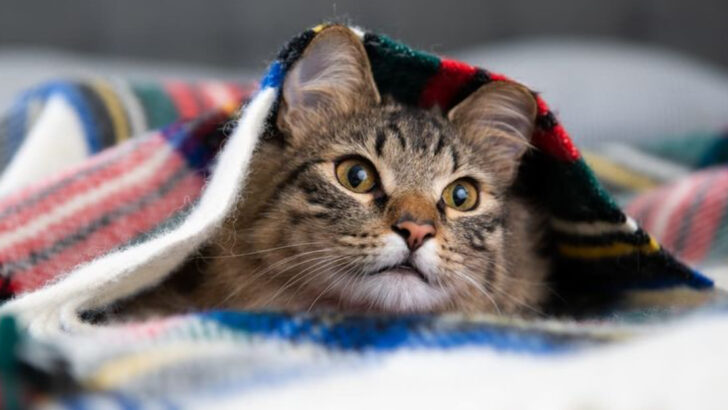A frightened cat is not just “nervous”—it’s a bundle of raw instincts, ready to bolt, hide, or hiss at anything that feels like a threat. If you’ve ever seen a puffed-up tail or heard that deep, uneasy growl, you know exactly what fear looks like in feline form.
Your cat isn’t being dramatic; it’s wired for survival. Even the smallest shift in routine—a loud noise, a new visitor, or an unfamiliar scent—can send it into panic mode. And once fear takes hold, it can be tough to bring them back to a state of calm.
The good news? You don’t have to just sit back and watch. There are simple, powerful ways to reassure your cat, help it feel safe, and rebuild its confidence.
From creating the perfect hiding spots to using the right kind of touch, these 15 calming solutions will help turn a terrified kitty into a relaxed and trusting companion.
Create a Safe Space
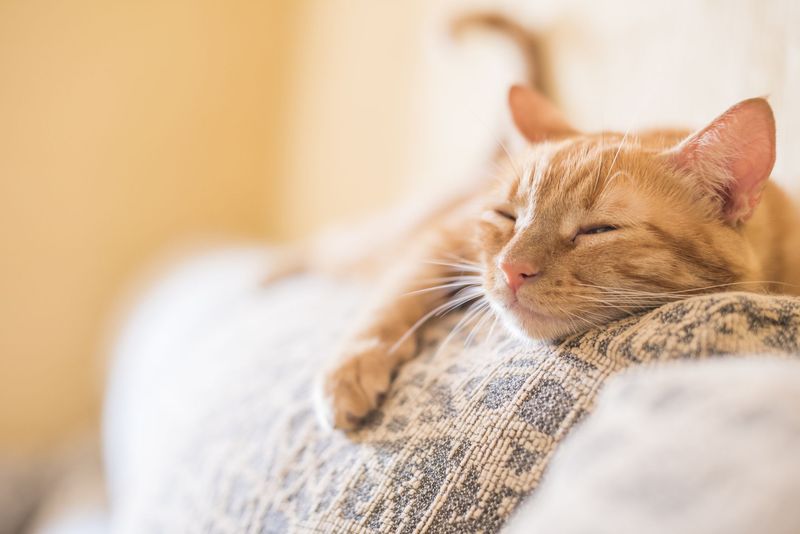
Creating a safe space for your cat is essential. Utilize a quiet corner in your home, complete with soft blankets and dim lighting, to offer a retreat for your cat. Cats often feel secure in enclosed spaces, so consider adding a small box or cat bed. This personal haven should be accessible and away from high-traffic areas.
Ensure the area is free from loud noises or sudden movements that may startle your cat. Reinforce this spot as a positive place by leaving treats or toys. Over time, your cat will associate this space with safety and tranquility.
Use Calming Sprays
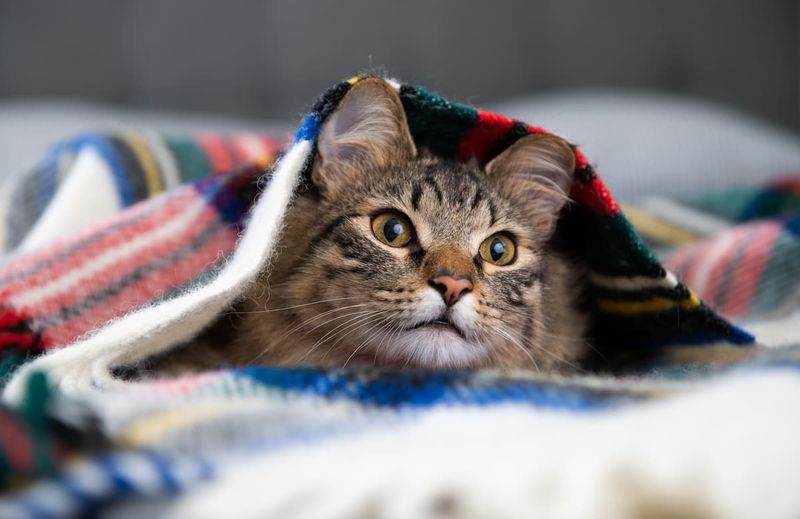
Calming sprays can be a game-changer for soothing scared cats. These sprays often contain synthetic feline pheromones that mimic those cats produce naturally. Spritz the spray in areas where your cat spends most of its time.
This can help reduce anxiety and promote a sense of calm. While it’s crucial not to spray directly on your cat, applying it around their environment is effective. Most sprays are safe for furniture, so feel free to use them liberally. This simple solution can help create a peaceful atmosphere for your feline friend.
Play Soft Music

Music isn’t just for humans; it can also calm cats. Playing soft, classical music or specially composed pet music can create a soothing environment for a scared cat. Keep the volume at a gentle level to prevent further stress.
Position the music source near your cat’s resting spot for maximum effect. The rhythmic sounds can mimic a heartbeat, providing comfort. Over time, your cat may associate the melodies with a sense of calm and relaxation. This is an easy, non-invasive way to ease tension and promote peace.
Provide a Hiding Spot
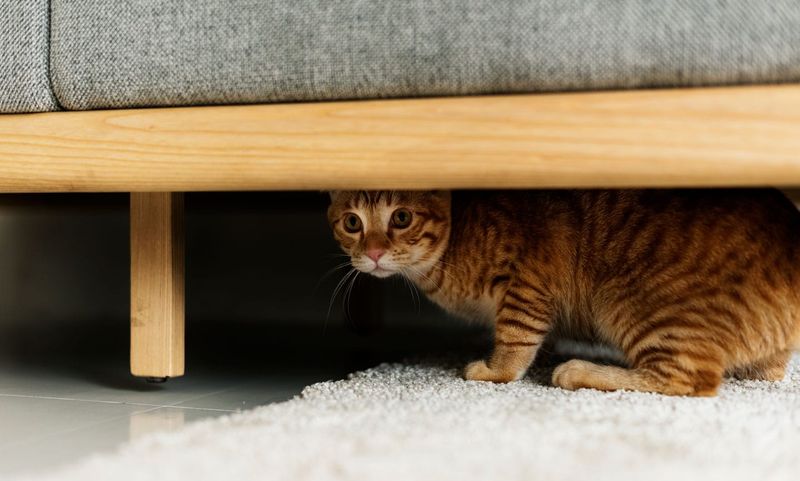
Hiding is a natural behavior for scared cats. Providing a designated hiding spot helps them feel secure. A small tent-like cat bed or a cardboard box lined with soft materials can work wonders.
Place these hiding spots in calm, low-traffic areas of your home. Allow your cat to retreat here whenever they feel overwhelmed. Avoid disturbing them while they’re in their safe zone. Acknowledging your cat’s need for space can significantly reduce their anxiety and gradually build their confidence and trust.
Offer Interactive Toys
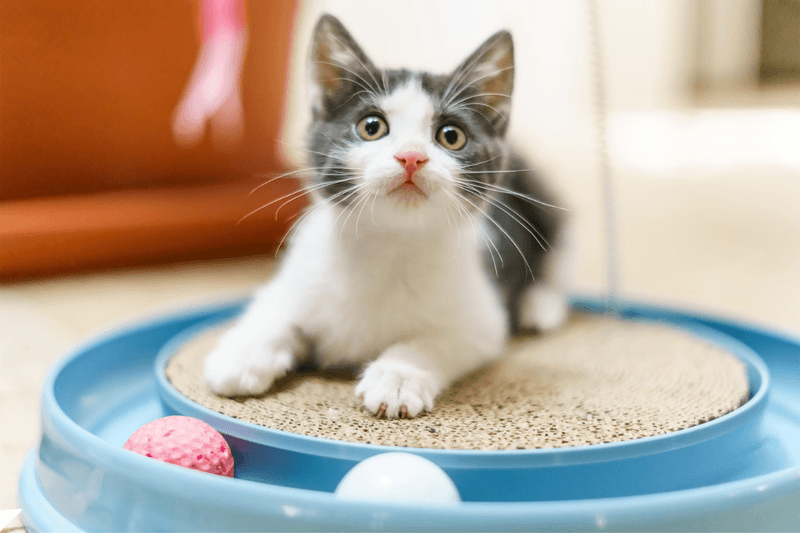
Interactive toys can distract and soothe a scared cat. Toys like feather wands or laser pointers encourage physical activity and mental stimulation. Engaging in play allows cats to release pent-up energy and stress.
Provide a variety of toys to see which ones your cat prefers. Rotate them regularly to maintain interest. Playing with your cat not only offers comfort but also strengthens your bond. Remember to be gentle and patient during playtime, catering to your cat’s mood and willingness to engage.
Speak in Gentle Tones
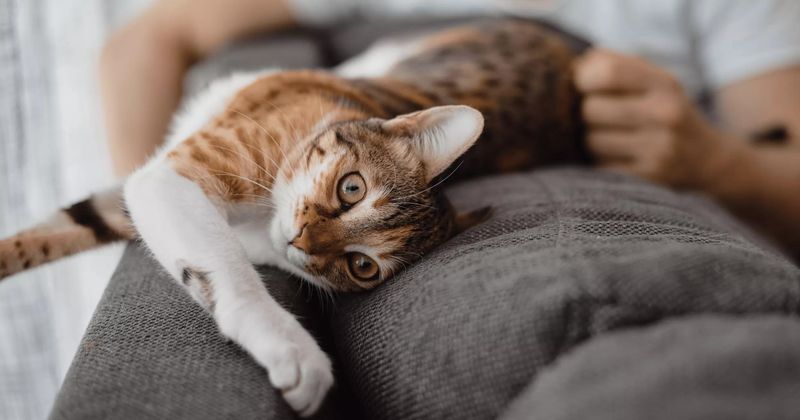
Your voice can be incredibly reassuring to a scared cat. Speak in soft, gentle tones to provide comfort and show them they are safe. Avoid loud or harsh words, as these can exacerbate a cat’s anxiety.
Maintain a calm demeanor and offer words of reassurance. Even if cats don’t understand the words, they recognize the tone and intent. Regularly interacting with your cat in this way can foster trust and ease fear over time. Your supportive and calm presence is a powerful tool in soothing a scared cat.
Use Feline Pheromone Diffusers
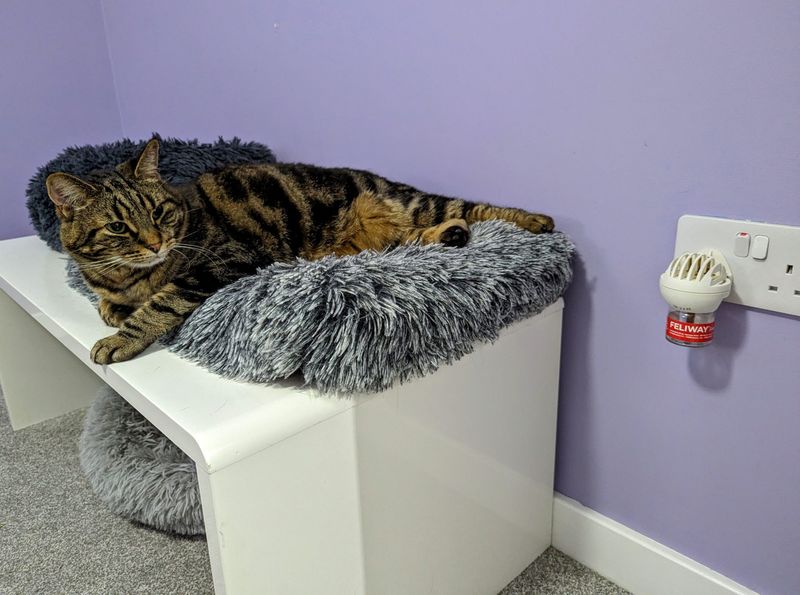
Feline pheromone diffusers emit synthetic copies of natural cat pheromones, promoting a sense of security. These plug-in devices are simple to use and can cover large areas of your home.
Place a diffuser in rooms where your cat spends most of their time. Continuous use can help maintain a calm environment, reducing anxiety and stress. While not a cure-all, these diffusers are highly effective when combined with other calming strategies. They provide a silent, invisible touch of comfort that reassures your cat on a daily basis.
Maintain a Routine

Cats thrive on routine. Maintaining a consistent daily schedule for feeding, playtime, and quiet time can greatly soothe a scared cat. Predictability fosters a sense of security and control over their environment.
Try to keep meal times and bedtime consistent, even on weekends. This stability can help reduce anxiety and promote a feeling of safety. Adjust your routine slowly if changes are necessary, allowing your cat to adapt at their own pace. A well-structured day ensures a balanced and less stressful life for your feline.
Offer High Perches

Cats naturally love high vantage points to observe their surroundings. Providing high perches or cat trees can help soothe scared cats by giving them a sense of control and safety.
Position these perches near windows or in rooms where your cat can watch household activities without feeling threatened. The ability to observe from a safe height calms fears and satisfies their curiosity. Over time, access to high perches can increase confidence and reduce anxiety. This small adjustment can make a big difference in your cat’s comfort level.
Try Gentle Brushing
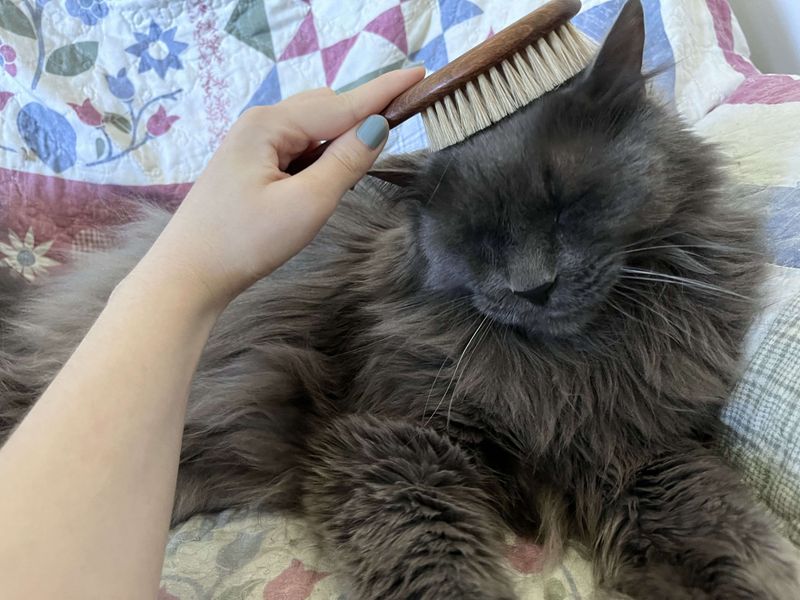
Gentle brushing can be a soothing activity for scared cats. Use a soft brush and slow, deliberate strokes to avoid overstimulation. This mimics the grooming behavior cats exhibit when they are calm and friendly.
Brushing not only removes loose fur and reduces shedding but also strengthens your bond with your cat. Start with short sessions and gradually increase the duration as your cat becomes more comfortable. Be attentive to their reactions, stopping if they show signs of discomfort. This tactile interaction can greatly alleviate anxiety and promote relaxation.
Use Catnip Sparingly

Catnip can be a delightful treat for some cats, providing moments of joy and relaxation. However, it’s essential to use it sparingly, as too much can lead to overstimulation.
Introduce catnip toys or sprinkle a small amount on their favorite play areas. Observe your cat’s reaction, as not all cats are affected by catnip. For those that are, it can be a helpful tool in creating happy, stress-free moments. This simple indulgence should complement other calming strategies rather than replace them entirely.
Limit Exposure to Stressors
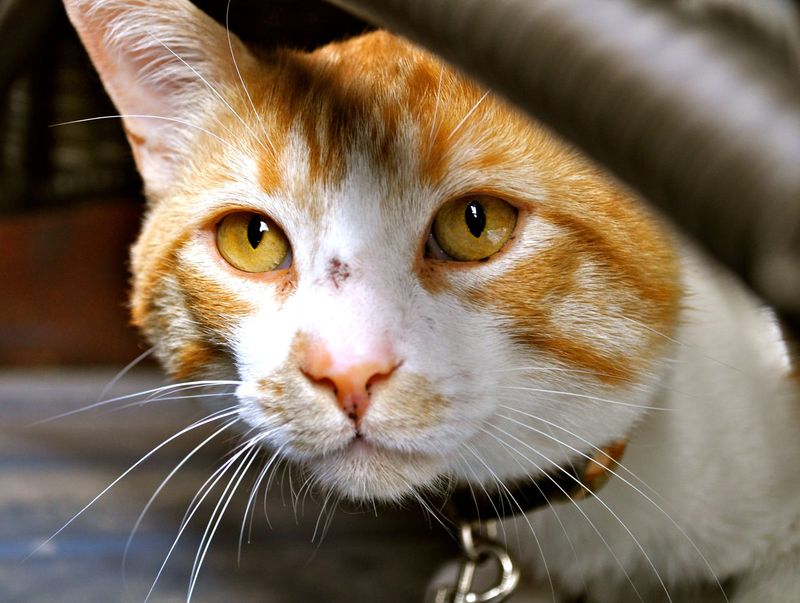
Limiting exposure to stressors is key in soothing a scared cat. Identify potential triggers like loud noises, strangers, or other animals.
Close windows to block out external noises and provide a quiet sanctuary. If visitors are a source of stress, create a safe space for your cat to retreat to until they leave. Gradually introduce your cat to new experiences and people to help them build confidence. Ensuring a calm environment minimizes anxiety and helps your cat feel at ease, transforming their home into a peaceful refuge.
Ensure Regular Vet Checkups
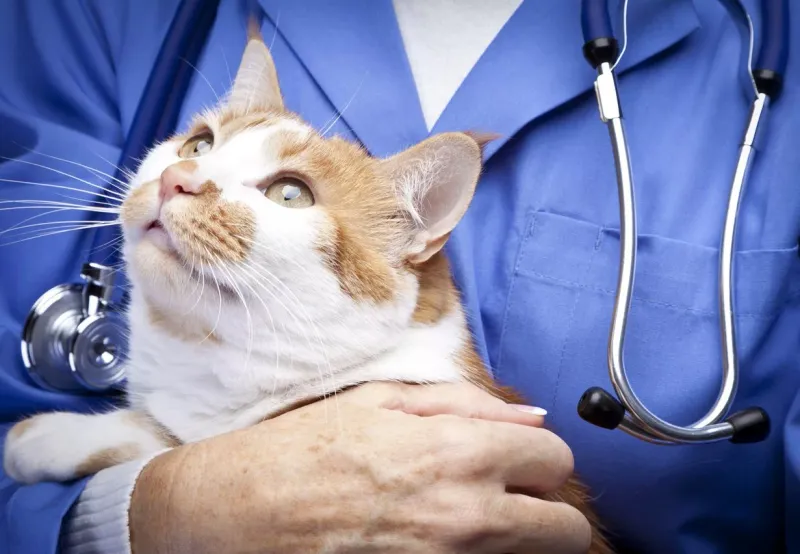
Regular vet checkups are crucial to rule out medical issues that could contribute to anxiety. Ensure that your cat’s health is in top condition, as some illnesses can cause stress.
Choose a vet with experience handling anxious animals, and discuss any behavioral concerns you may have. A gentle, thorough examination can reassure both you and your cat. Keeping up with vaccinations and regular health checks prevents underlying conditions from exacerbating anxiety. This proactive approach in caring for your cat’s health contributes to their overall sense of well-being and calm.
Provide Litter Box Security
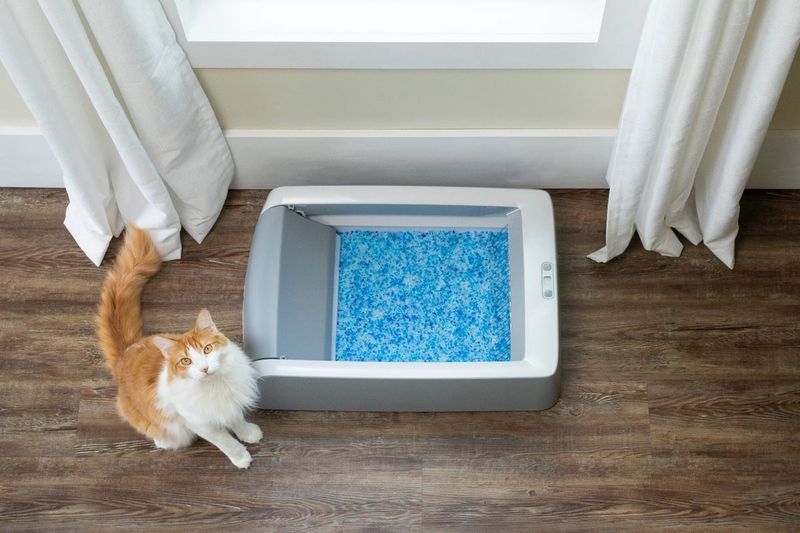
The litter box is a critical aspect of a cat’s sense of security. Ensure it is clean, easily accessible, and located in a quiet area. Avoid placing it near loud appliances or high-traffic zones to prevent stress.
Cats are sensitive to their surroundings, and disruptions in their litter box routine can elevate anxiety levels. Maintaining cleanliness and accessibility fosters a comfortable and reassuring environment. Regularly check to ensure your cat feels safe using their litter box, as this is a fundamental part of their daily routine and well-being.
Seek Professional Help
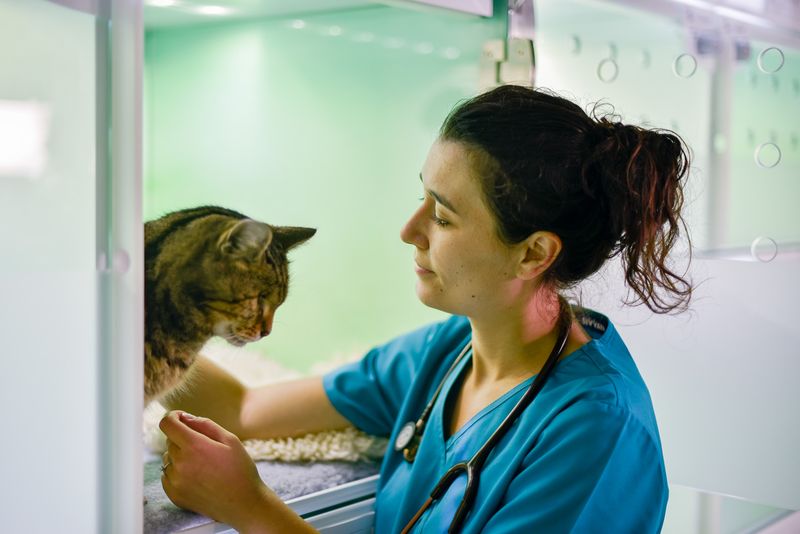
If anxiety persists, consider seeking professional help. Animal behaviorists can offer valuable insights and personalized strategies for managing your cat’s fear.
Consulting with a professional provides tailored advice and support, addressing your cat’s specific needs. They can recommend behavioral interventions or environmental changes that may be overlooked. This expert guidance can be instrumental in overcoming persistent anxiety, ensuring a happier and more relaxed life for your feline companion. Professional help serves as an important resource when other strategies are insufficient.

